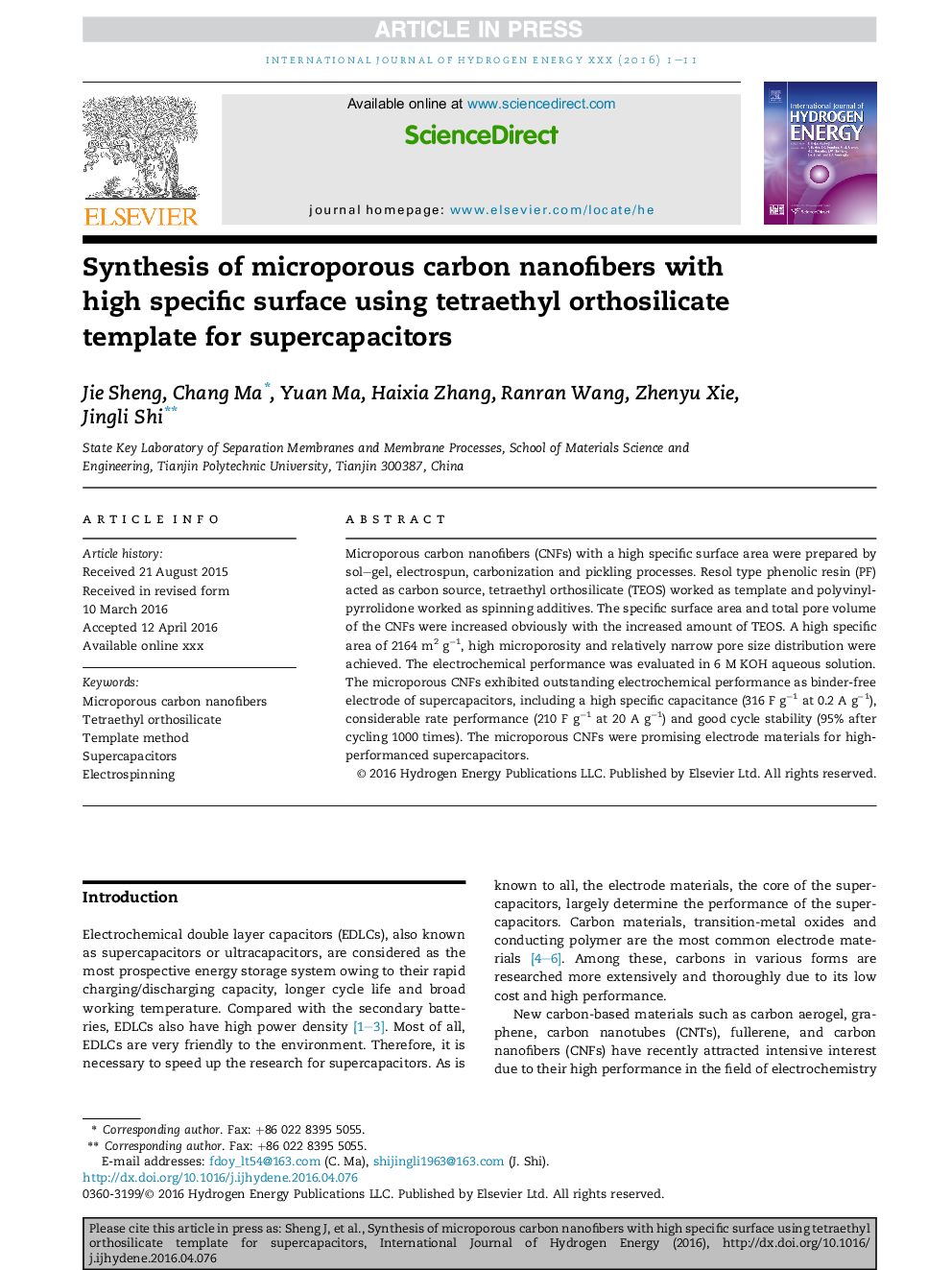| Article ID | Journal | Published Year | Pages | File Type |
|---|---|---|---|---|
| 7710452 | International Journal of Hydrogen Energy | 2016 | 11 Pages |
Abstract
Microporous carbon nanofibers (CNFs) with a high specific surface area were prepared by sol-gel, electrospun, carbonization and pickling processes. Resol type phenolic resin (PF) acted as carbon source, tetraethyl orthosilicate (TEOS) worked as template and polyvinyl-pyrrolidone worked as spinning additives. The specific surface area and total pore volume of the CNFs were increased obviously with the increased amount of TEOS. A high specific area of 2164Â m2Â gâ1, high microporosity and relatively narrow pore size distribution were achieved. The electrochemical performance was evaluated in 6Â M KOH aqueous solution. The microporous CNFs exhibited outstanding electrochemical performance as binder-free electrode of supercapacitors, including a high specific capacitance (316Â FÂ gâ1 at 0.2Â AÂ gâ1), considerable rate performance (210Â FÂ gâ1 at 20Â AÂ gâ1) and good cycle stability (95% after cycling 1000 times). The microporous CNFs were promising electrode materials for high-performanced supercapacitors.
Related Topics
Physical Sciences and Engineering
Chemistry
Electrochemistry
Authors
Jie Sheng, Chang Ma, Yuan Ma, Haixia Zhang, Ranran Wang, Zhenyu Xie, Jingli Shi,
